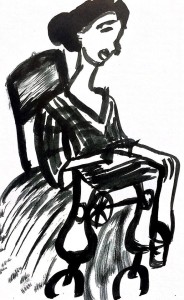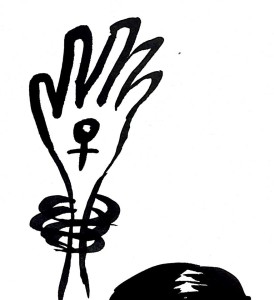(Note: This article was modified from the original paper I wrote on the subject.)
As a society, we often forget the landmark Seneca Falls Convention, which took place July 19, 1848 in Seneca Falls, New York. If you’re wondering what it was and why it is so important to recognize, you are not alone. It was there that the first-ever women’s rights convention was held. It was there that the United States was graced with the words of the Declaration of Sentiments and Resolutions, the first document to advocate for women’s rights. It was there that the women’s suffrage movement, which has given women a foundation from which to advocate for their rights today, began.
Led by Lucretia Mott, Martha Wright, and Elizabeth Cady Stanton, the convention was held to challenge a repressive, patriarchal society, which deprived women of their social, political, and civil rights and had confined them to the domestic realm. Elizabeth Cady Stanton, the primary author of the document, based her arguments on the Declaration of Independence to heighten her credibility and reveal the hypocrisy of the law-abiding man. Rising from the antebellum period, the Seneca Falls Convention was the first step toward granting women their long-deprived right to vote.
Women’s Roles in the 19th Century

Amidst the dawning industrial society that characterized the antebellum period of the mid-19th century, the role of a woman in her family was changing. The Industrial Revolution brought about dramatic transformation in the domestic lives of Americans and fostered the development of a new consciousness of women’s role in society, which many began to question. Poor American and immigrant women were drawn from producing domestic goods in their homes to the factories that provided employment to a newly formed industrial workforce. Now working along with her husband and children, a woman’s wage was vital to the sustenance of her family. Middle class and farm women also underwent a transition. Due to the commercialization of agriculture, farm owners relied less on their families and more on paid workers for labor. Women began to partake in more domestic tasks such as housekeeping, cooking, and child rearing. They took to making the home a sanctuary from the cutthroat world on the outside while cultivating an atmosphere of “benevolence” and “morality.” No longer contributing to the family income, women began to build a “separate sphere” where they formed social networks and produced feminine literature. This “cult of domesticity” increasingly alienated women from life outside the home. This led to discussions amongst women about the multitude of legal and political rights they were deprived of. The increasing isolation of middle-class women allowed for the formation of a collective, organized, effort to advocate for their rights.
Emerging Ideologies in the 19th Century

The mid-19th century saw cultural and reform movements that led to the emergence of feminism, and, ultimately, to the Seneca Falls Convention. America was still strongly under the influence of Europe and admired its art and intellectuality. The United States had proven itself a nascent world power, yet it did not yield a distinctive literature, philosophy, or art until the mid-nineteenth century, when a more distinctive American literature blossomed, influenced by romanticism and nature. This new romantic impulse gave rise to the ideals of Unitarianism and Universalism, leading women to question their positions in society and to take a more individualistic approach to life. Out of Unitarianism rose Transcendentalism, which encouraged the individual to rise above the constraints of society and seek the capacity to go beyond his or her current state of mind. Transcendentalist Margaret Fuller encouraged women to “lay aside all thought, such as she habitually cherishes, of being taught and led by man,” thus setting a precedent for the women of the Seneca Falls Convention.
Reform Movements of the 19th Century
Anti-slavery sentiment reached its peak in the 1830s. With William Lloyd Garrison now on the scene, the abolitionist movement took on a new life. The American Antislavery Society (AASS) emerged and by 1838 was compromised of 250,000 members and had the support of many free blacks. Free blacks were beginning to attain positions of influence. Frederick Douglass, most notably, supported the women at the convention, revering them for their courageous leadership. The abolitionist movement attracted many women and the AASS provided opportunities for them to advocate on behalf of slaves. Naturally, the question of the rights of women soon arose: If slaves were entitled to all the rights of their former masters, weren’t they, as educated women, entitled to those rights as well? The answer became obvious to many.
Outspoken female anti-slavery advocates, such as the Grimke sisters, Harriet Beecher Stow, Dorothea Dix, Lucretia Mott, and Elizabeth Cady Stanton, were criticized for stepping outside their assigned spheres and causing a stir. During the 1840 World Anti-Slavery Convention in London, they were heartbreakingly turned away after they had traveled across the expanses of the Atlantic Ocean to partake in furthering the cause for human rights. This episode incited the delegates to advocate for the elevation of women’s status so they could have a greater impact on the issue of slavery. Amongst these delegates were the passionate Lucretia Mott and Elizabeth Cady Stanton. Why stop at slavery? Eight years later, after much organization and planning, the groundbreaking Seneca Falls Convention took place.
The Declaration of Sentiments
“We hold these truths to be self – evident: that all men and women are created equal; that they are endowed by their Creator with certain inalienable rights; that among these are life, liberty, and the pursuit of happiness; that to secure these rights governments are instituted, deriving their just powers from the consent of the governed.” -Declaration of Sentiments and Resolutions
It was a radical document, a document so revolutionary the Convention itself was hesitant to approve it. “We hold these truths to be self-evident: that all men and women are created equal.” Stanton included a direct quote from the preamble of the Declaration of Independence, changing “men” to “men and women.” The justification of a woman’s right to protest her unequal treatment intentionally fell upon “God” and “the laws of nature.” Stanton informed her audience of the “inalienable rights” given to mankind by their “Creator,” and quoted the natural rights of “life, liberty, and the pursuit of happiness,” which were enumerated by the Declaration of Independence. Stanton conveyed mankind as “more disposed to suffer while evils are sufferable, than to right themselves by abolishing the forms to which they are accustomed,” intimating how complacency led to a preference for peace over righteousness. The strong appeal to logic at the beginning of the speech allowed Stanton to transition to a biting enumeration of the many fallacies within the contemporary system of governance.

Religion played a significant role in the lives of many Americans at the time, and Stanton, religious herself, used this to her advantage. She portrayed men as assuming the role of the omnipotent, the role of God, which would be severely frowned upon by the church. She claimed that men deemed themselves to have an “apostolic” authority over women and relegated them to an inferior position in the church. Employing a reference to Jehovah and accusing men of “usurping” Jehovah’s “prerogative,” she conveyed the sense of entitlement demonstrated by men when determining where and how women should live their lives.
Using words such as “abuses,” “usurpations,” “monopolized,” and “despotism,” Stanton demonstrated the way men had created a dictatorial world to which women were forcibly bound. Stanton declared that men had deprived women of their “universal inalienable rights” by not allowing them to vote. Inalienable rights and democratic legislation were some of the basic principles the nation was founded upon. Stanton argued that while uneducated men could exercise the principal right of any citizen, the right to vote, women of literacy still could not. She implied that women could be immoral and irresponsible so long as she had the consent of her husband. A woman’s husband was her “master” who would deal out punishment when and how he deemed it suitable. He dictated the “laws of divorce,” giving him access to the children regardless of what the woman, or even the children, wanted. Stanton pointed out that women were taxed so that the government could glean profits off them, yet women were deprived of a higher education and the opportunity for intellectual growth. Women could not advance in the fields of theology, medicine, or law because of restrictions imposed upon them.
Aftermath of the Convention
In the end, 68 women and 32 men out of the 300 people who attended the convention were compelled to sign the document. The aftermath of the Convention brought about mixed sentiments from the press and the public. Some newspapers, such as the National Reformer and Frederick Douglas’ The North Star, praised the convention as the starting point in the race to provide women with full social, civil, and political rights. Unsurprisingly, most contemporary commentators, such as the Albany Mechanic’s Advocate, mocked the Convention and believed it would “prove a monstrous injury to all mankind.” A number of ministers who had attended the Convention refused to disclose their position, and even some of the original signers preferred to keep their names confidential, afraid of the social ramifications that would reach them if they admitted to supporting the ideas of the convention. However, the organizers of the convention saw this discussion as a victory. The wide circulation of newspapers would call upon men and women to open their minds. Two weeks later, a regional Woman’s Rights Convention took place. More conventions were held nationwide in the coming years, leading to the formation of the groundbreaking National American Woman Suffrage Association in 1890, which made great political headway. Susan B. Anthony joined the movement, and as Stanton remarked, “I forged the thunderbolts and she fired them.” Anthony became the new face of the movement. Finally, in 1919, after much contention and strife, the 20th Amendment was passed, thus enfranchising the other half of the American population.
As women, we all have a personal connection with the Declaration of Sentiments because it laid the foundation for the opportunities that exist for us today. The Declaration of Independence did not do this for us. Everyone at that time was so entrenched in the mindset that women were subservient to men that to consider anything else would have been egregious. I have known many strong women in my life that have forged paths to success. We are indebted to Elizabeth Cady Stanton and the organizers of the Seneca Falls Convention for challenging the status quo and making strides for women.



Great website you have here but I was wondering if you knew of any
discussion boards that cover the same topics discussed here?
I’d really like to be a part of online community where I can get opinions from other experienced individuals that
share the same interest. If you have any recommendations, please let me know.
Kudos!
I like what you guys are up too. This kind of clever work and reporting!
Keep up the very good works guys I’ve included you guys to
my personal blogroll.
whoah this weblog is wonderful i love reading your articles.
Stay up the good work! You know, a lot of persons are looking
around for this information, you can aid them greatly.
You should be part of a contest for starters of the most
useful websites online. I’m gonna recommend this site!